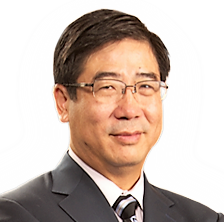Sciatica: Causes and Treatment
WEST ORANGE, N.J. (PRWEB) March 28, 2022
Sciatica is a term used to refer to nerve pain that originates in the lower back and is felt through the buttock, down the back of the thigh, and into the calf. Sciatic pain radiates along the path of the sciatic nerve, the longest single nerve in the body. There are two sciatic nerves, the right and the left, each supplying the corresponding leg and sciatic pain is typically felt just on the side with the affected nerve. “Sciatica is not itself a medical diagnosis,” says Dr. Kaixuan Liu, Founder of Atlantic Spine Center. “It describes a set of symptoms caused by an underlying medical condition that is responsible for compressing the sciatic nerve where it emerges from the spine. Sciatic pain can be mild or excruciating and often resolves with self-care but there may be indications that call for medical attention.”
What does sciatica feel like?
Sciatic pain radiates out from the sciatic nerve and may be felt anywhere along its path. It is commonly felt on one side from the lower back or buttock all the way down the leg, usually down the back of the leg. The pain may be a mild ache, a sharp burning sensation, or an excruciating pain that feels like an electric shock. Pain is sometimes accompanied by tingling, numbness, or weakness. There might be pain in one part of the leg and numbness in another. Symptoms might be better or worse in different positions — sitting, bending, standing – and may be alleviated by walking. Medical attention should be sought immediately if there is progressive neurological deterioration such as leg weakness or bowel and/or bladder dysfunction.
What causes sciatica?
Sciatica is triggered when the sciatic nerve is compressed or pinched in the lumbar spine often by a herniated disc. Discs are shock-absorbing cushions between the vertebrae in the spine. Each disc has a strong, fibrous outer ring and a soft, gel-like center. A herniated disc occurs when a tear in the tough outer layer of cartilage allows some of the soft inner material to protrude out of the disc. Other causes of sciatica include spinal stenosis, a narrowing of the space through which the nerves pass in the spinal canal; general degenerative changes in the vertebrae or discs; and spasms of the lumbar or pelvic muscles.
Who is at risk for sciatica?
Many of the causes of sciatica are due to age-related spinal degeneration, making advancing age the most common risk factor. Others include obesity, which increases the pressure on the spine; occupations that require frequent twisting, carrying heavy loads, or sitting for prolonged periods; and diabetes, which increases the risk of nerve damage.
How is sciatica treated?
Most cases of sciatica improve with four to six weeks of non-surgical care, generally including some combination of physical therapy, medication, and therapeutic injections. Sciatica is considered chronic if it lasts longer than eight weeks and the length of treatment may depend on the underlying cause.
The goal of physical therapy for sciatica is to strengthen the muscles of the spine, abdomen, buttocks and hips; to stretch tight muscles like the hamstrings; increase core strength; and improve aerobic conditioning with gentle exercises like walking and water therapy. Some forms of massage therapy can be helpful to relax tight muscles and improve circulation. Medication might include prescription drugs like oral steroids or – for short periods – opioid analgesics; over-the-counter remedies such as non-steroidal anti-inflammation drugs (NSAIDS) like naproxen and ibuprofen; and steroidal injections to control inflammation around the nerve. Surgery may be indicated in severe cases or in the presence of progressive neurological symptoms.
How can sciatica be prevented?
“It may not be possible to prevent all age-related degeneration of the spine,” says Dr. Liu, “but general good health habits go a long way to preventing back problems like sciatica. These include regular exercise, particularly a core-strengthening regimen targeting the muscles of the back and abdomen, proper sitting pasture with good lower back support, and proper lifting technique that lets the legs rather than the back do the work. Your back is designed to support your whole body. Take good care of it and it will carry you far!”
Atlantic Spine Center is a nationally recognized leader for endoscopic spine surgery with several locations in NJ and NYC. http://www.atlanticspinecenter.com, http://www.atlanticspinecenter.nyc
Kaixuan Liu, MD, PhD, is a board-certified physician who is fellowship-trained in minimally invasive spine surgery. He is the founder of Atlantic Spine Center.

